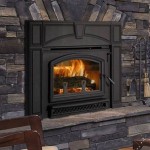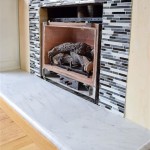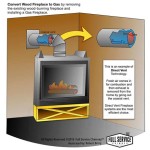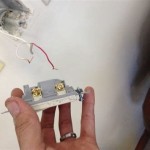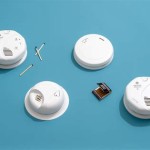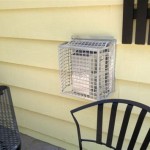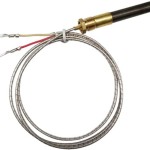Fireplace Insert Pellet: A Comprehensive Guide
A fireplace insert pellet is a self-contained heating appliance designed to be installed within an existing masonry or factory-built fireplace. It operates by burning compressed wood or biomass pellets, offering an efficient and environmentally conscious alternative to traditional wood-burning fireplaces. These inserts provide a controlled and consistent heat output, improving energy efficiency and reducing emissions compared to open hearth fires. The integration of advanced combustion technology and electronic controls allows for precise temperature regulation and automated operation.
The primary function of a fireplace insert pellet is to transform an underutilized or inefficient fireplace into a powerful and reliable heat source. By enclosing the fire within a sealed unit, the insert minimizes heat loss up the chimney, a common problem with traditional fireplaces. The forced-air system, integral to most pellet inserts, circulates warm air into the room, distributing heat evenly and effectively. This results in a significant improvement in heating performance, making a fireplace insert pellet a viable option for supplemental or even primary heating in certain climates and home sizes.
The design of a fireplace insert pellet involves several key components working in concert. The hopper stores the pellets, which are then automatically fed into the burn pot by an auger system. The burn pot is where the pellets are ignited and combusted, creating heat. A combustion blower provides the necessary air for efficient burning, while an exhaust blower vents the combustion gases out of the chimney. A heat exchanger extracts heat from the combustion gases and transfers it to the air circulating through the insert, which is then dispersed into the room by a circulation blower. Electronic controls manage the entire process, regulating fuel feed, air flow, and temperature settings.
The widespread adoption of fireplace insert pellets reflects a growing awareness of energy efficiency and environmental responsibility. These appliances offer a cleaner burning and more sustainable alternative to traditional wood-burning fireplaces, contributing to reduced air pollution and greenhouse gas emissions. The use of renewable biomass fuels, such as wood pellets, further enhances the environmental benefits, as these fuels are derived from sustainably managed forests and agricultural residues.
Key Point 1: Efficiency and Heating Performance
The enhanced efficiency of a fireplace insert pellet stems primarily from its sealed design and advanced combustion technology. Traditional open hearth fireplaces are notoriously inefficient, with a significant portion of the heat produced escaping up the chimney. This is due to the natural draft that pulls warm air out of the room, even when the fireplace is not in use. A fireplace insert pellet, on the other hand, creates a closed system that traps heat within the unit and directs it into the living space.
The forced-air system plays a crucial role in maximizing heat distribution. The circulation blower draws cool air from the room, passes it through the heat exchanger where it is warmed, and then blows the heated air back into the room. This forced-air circulation ensures that heat is evenly distributed throughout the space, eliminating cold spots and creating a comfortable and consistent temperature. The ability to control the fan speed allows for customized heat output, providing greater flexibility in managing room temperature.
The sealed combustion process also contributes to improved efficiency. By controlling the air supply to the burn pot, the insert ensures that the pellets are burned completely and efficiently. This reduces the amount of unburned fuel and minimizes the production of smoke and emissions. The electronic controls continuously monitor and adjust the air-fuel mixture to optimize combustion performance, resulting in higher heat output and lower fuel consumption.
The heating performance of a fireplace insert pellet is typically measured in British Thermal Units (BTUs) per hour. The BTU rating indicates the amount of heat the insert can produce, and it is an important factor to consider when selecting an insert. The appropriate BTU rating will depend on the size of the space to be heated, the climate, and the insulation levels of the home. A properly sized insert can provide supplemental heat to a large area or even serve as the primary heat source for a smaller home.
Key Point 2: Environmental Considerations and Fuel Source
The environmental benefits of a fireplace insert pellet are significant compared to traditional wood-burning fireplaces. Pellet inserts produce far fewer emissions, including particulate matter, carbon monoxide, and volatile organic compounds (VOCs). This is due to the more complete and controlled combustion process, which minimizes the release of harmful pollutants into the atmosphere. The EPA has established emission standards for pellet stoves and inserts, ensuring that these appliances meet strict environmental requirements.
The use of wood pellets as a fuel source is also environmentally advantageous. Wood pellets are a renewable biomass fuel made from compressed sawdust, wood shavings, and other wood residues. These materials are often byproducts of the lumber and furniture industries, making pellets a sustainable and environmentally friendly fuel option. Utilizing wood waste for pellet production reduces the amount of material sent to landfills and promotes responsible forest management practices.
The carbon neutrality of wood pellets is another important environmental consideration. Trees absorb carbon dioxide from the atmosphere during their growth, and this carbon is stored in the wood. When wood pellets are burned, the carbon dioxide that is released is roughly equivalent to the amount that was absorbed during the tree's lifetime. This means that burning wood pellets does not contribute significantly to the net increase of carbon dioxide in the atmosphere, unlike fossil fuels.
While the manufacturing and transportation of wood pellets do involve some energy consumption and emissions, the overall environmental impact is still significantly lower than that of fossil fuels. The use of locally sourced wood pellets can further reduce the transportation emissions associated with pellet burning. By choosing a fireplace insert pellet and using sustainable wood pellets, homeowners can contribute to a cleaner and more sustainable environment.
Key Point 3: Operational Advantages and Maintenance
Fireplace insert pellets offer several operational advantages over traditional wood-burning fireplaces. The automated operation of these inserts simplifies the heating process and provides greater convenience for the user. The automatic fuel feed system eliminates the need to manually load wood logs into the fireplace, saving time and effort. The electronic controls allow for precise temperature settings and programmed operation, ensuring consistent and comfortable heating.
The thermostat control feature allows the insert to maintain a desired room temperature automatically. The user can set the thermostat to the desired temperature, and the insert will automatically adjust the fuel feed and air flow to maintain that temperature. This eliminates the need to constantly monitor and adjust the fire, providing hands-free operation and consistent heating performance. Some models even offer remote control functionality, allowing the user to adjust the temperature from anywhere in the room.
Maintenance requirements for fireplace insert pellets are relatively simple and straightforward. Regular cleaning is necessary to ensure optimal performance and prevent malfunctions. The ash pan should be emptied regularly, and the burn pot should be cleaned to remove any accumulated ash or debris. The venting system should also be inspected and cleaned periodically to ensure proper exhaust flow. A professional inspection and cleaning is recommended annually to ensure the insert is operating safely and efficiently.
The use of high-quality wood pellets is also important for maintaining optimal performance. Pellets that are low in ash content and have a consistent size and density will burn more efficiently and produce less residue. Storing pellets in a dry and protected location will prevent them from becoming damp or moldy, which can affect their burning characteristics. Following these simple maintenance guidelines will ensure that the fireplace insert pellet provides years of reliable and efficient heating.
In addition to the operational and environmental benefits, a fireplace insert pellet also offers safety advantages over traditional fireplaces. The sealed combustion chamber prevents sparks and embers from escaping into the room, reducing the risk of fire. The electronic controls provide safety features such as overheat protection and automatic shutdown in case of malfunction. With proper installation and maintenance, a fireplace insert pellet can provide a safe and reliable heating solution for any home.

Pellet Fireplace Inserts Lopi Stoves Made In Usa

Pellet Fireplace Inserts Lopi Stoves Made In Usa

Pellet Fireplace Inserts Complete Home Concepts

Wood Stoves Pellet Gas Fireplace Inserts

Pellet Fireplace Inserts Lopi Stoves Made In Usa

Pellet Stove Inserts The 1 Fireplace

Fireplace Insert Stoves Wood Gas Pellet Traditional Baltimore Maryland

Pellet Burning Fireplace Inserts Sierra Hearth And Home

Pellet Stove Inserts Turn Drafty Fireplaces Into Heaters Complete Home Concepts

Pellet Fireplace Inserts Insert Installation In Burlington Wi More
Related Posts

